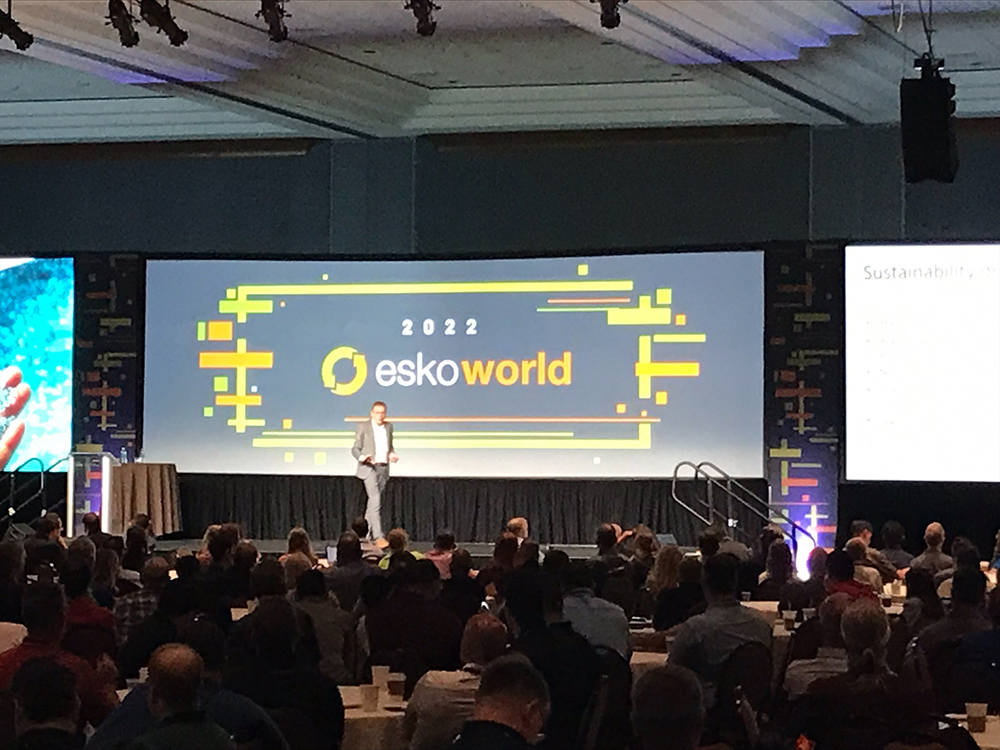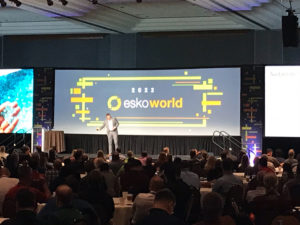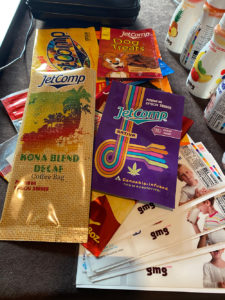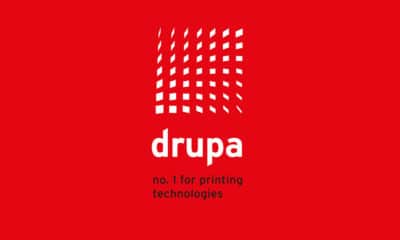MORE THAN 500 brand suppliers and owners from across the globe attended EskoWorld 2022 June 7-9 at the Gaylord Texan Resort in Grapevine, Texas, to collaborate with colleagues, influence Esko solution roadmaps, and dive into current industry trends. At the 31st annual event (minus the pandemic years), “users collaborated on accomplishments, discussed shared obstacles, enhanced their knowledge of Esko solutions, and shared and learned industry best practices,” according to Esko. The event showcased new interfaces for products like PCM and shared roadmaps for software updates, plus users were able to ask detailed questions about the products functioning in their businesses as well as work with the Esko software directly in hands-on classes.
Those attending from the wide-format space see packaging as a cost-effective color management tool and a beneficial way to print prototypes for customers. The cannabis retail market is currently a high driver for digitally printed packaging; wide-format PSPs can find success in offering environmental graphics as well as packaging to this growing industry.
Major Trends that Will Change the Packaging Industry Over the Next 10 Years
Here’s what Esko customers (many which were amplified by COVID-19) are saying:
- Proliferation to small brands
- More, but shorter, print runs
- Shorter lead times
- Environmental sustainability
- Ecommerce
- Fragile supply chains
- Raw material price increase
- Remote working
- Shortage of skilled labor
- Increasing consolidation
Stats from McKinsey & Company
- The US employee annual voluntary turnover is likely to jump nearly 20 percent this year, from pre-pandemic.
- There’s an annual average of 31.9 million employees quitting their jobs.
- Post-COVID-19, 52 percent of workers would prefer a more flexible working model.
Here are highlights from high-energy keynotes and standing room-only sessions:
Sustainability in Packaging
Jan De Roeck, director of Industry Relations and Strategy, Esko
“It’s an industry full of opportunity and it’s for both of us to realize that opportunity and that’s why we are here,” said Jan De Roeck as he kicked off the three-day event. He shared what’s been happening since the last EskoWorld in Nashville in 2019 – COVID-19, increase of local production and onshoring, geopolitical issues, social unrest, and more – and how our response to supply chain disruption and the reinvention of working and communicating, has affected the packaging industry. As many other print sectors, packaging and label makers were considered critical business and not forced to shut down during 2020.
“The future cannot be derived from the past, but one thing I know: The future will be disruptive and business leaders will have to adapt to a very different future,” said De Roeck.
Post-pandemic priorities for business leaders:
Sustainability
- Develop your strategy around environmental sustainability. Sustainability drives consumers. They’re no longer looking away; they’re buying sustainable products.
- Environmental sustainability can make or break a brand. Remember, a brand is a promise of value to a consumer.
- There will come a time when the consumer will no longer buy your products because they’re not sustainable or align with their values.
- Brand owners are making strong promises toward carbon neutrality. 2025 is an important milestone of having to prove these goals.
- NGOs (non-government organizations) are amplifying visibility.
- Investors are reallocating capital to sustainable portfolios.
- It’s much more than sustainable substrates. There’s a company-wide responsibility, cooperation across the value chain.
- If your brand customers want to become climate neutral, all of their suppliers will need be climate neutral as well
Digital Transformation
- Innovation drives digital transformation. You must accelerate the digital transformation journey for the entire business.
- Five percent of completed jobs have errors; consider automating your workflow
- Collaboration and teamwork are the key answers
Talent War
- We are in the midst of The Great Resignation, The Great Retirement, and The Great Reevaluation.
- You must acquire, retain, and develop talent.
- It’s a job seekers market. What are you offering to potential new employees?
Saas: What It Can Do for You and Getting Your ROI
Paul Land, product manager, Esko
Esko has made a large expansion in infrastructure and created a new team dedicated to security. Nearly 100 global employees are now committed to cloud operations and are operating 24/7 for their customers. The question remains for Esko users: perpetual software vs. SaaS?
Benefits of SaaS
- Cost – Initial hardware and software purchase cost is high and there can be many hidden and ongoing costs associated, but with SaaS it’s much lower and the cost is spread through the annual/monthly subscription. Customers are mainly paying for the configuration and internet.
- Operational Flexibility – With perpetual, you need to scale software/hardware to meet high customer demands, your system may go down, and working outside your network presents security issues, but with SaaS, a 24/7 team can manage it all.
- Infrastructure – There’s potential for a lack of IT resources needed to manage local software hardware and data to manage and maintenance business continuity, but with SaaS you don’t need additional resources.
So, why aren’t more moving away from this capital expense to an operating expense? “Data communication is the biggest hindrance from moving local to SaaS,” said Land.
The Future of Packaging
Maimouna Diakhaby, Associate Partner, McKinsey & Company
Post-COVID-19, we’re entering a new era for packaging, one where we “must double down on sustainability,” said Diakhaby. The pandemic rapidly accelerated an adoption of grocery ecommerce that would have taken years.
Top things to consider:
- Substrate wars
- Changing face of the consumer
- Sustainability
- Packaging is lagging in digital adoption
- Procurement is a valuable tool
Macro-trend: Women in Packaging
Melissa Plemen, Senior Director, Inside Sales and Marketing, Esko
Melissa Plemen, who is a founding member of Esko’s Women’s Group 2020 – an internal Esko group focused on women empowerment and women in the marketplace – led a discussion on diversity in the packaging industry. The packaging industry is traditionally male dominated. In 1976, less than five percent of packaging jobs were held by women. By 2018, the number rose to 35 percent, all while the population break down of men and women stayed the same (51 percent female, 49 percent male).
How do we change the industry?
- Advocate for girls/young women in STEM
- Advocate for yourself if you’re a female
- Find or be a male advocate(s)
How do females grow within the industry?
- Beat your inner critic (fear based)
- Remove the imposter syndrome (you’re not faking it)
- Find your personal brand (How do you wish to be seen and how are you building that perception?)
- Find a mentor
How can male allies help?
- Know that women are underrepresented, particularly in leadership positions, so become an advocate
- Bring awareness
Pro Tip: Companies with greater diversity are 70 percent more likely to capture more markets.
PHOTO GALLERY (17 IMAGES)
Advertisement


 VEHICLE WRAPS + GRAPHICS3 weeks ago
VEHICLE WRAPS + GRAPHICS3 weeks ago
 Press Releases3 weeks ago
Press Releases3 weeks ago
 Case Studies3 weeks ago
Case Studies3 weeks ago
 Case Studies1 week ago
Case Studies1 week ago
 Benchmarks3 weeks ago
Benchmarks3 weeks ago
 Press Releases2 months ago
Press Releases2 months ago
 Press Releases3 weeks ago
Press Releases3 weeks ago
 Press Releases2 months ago
Press Releases2 months ago



































